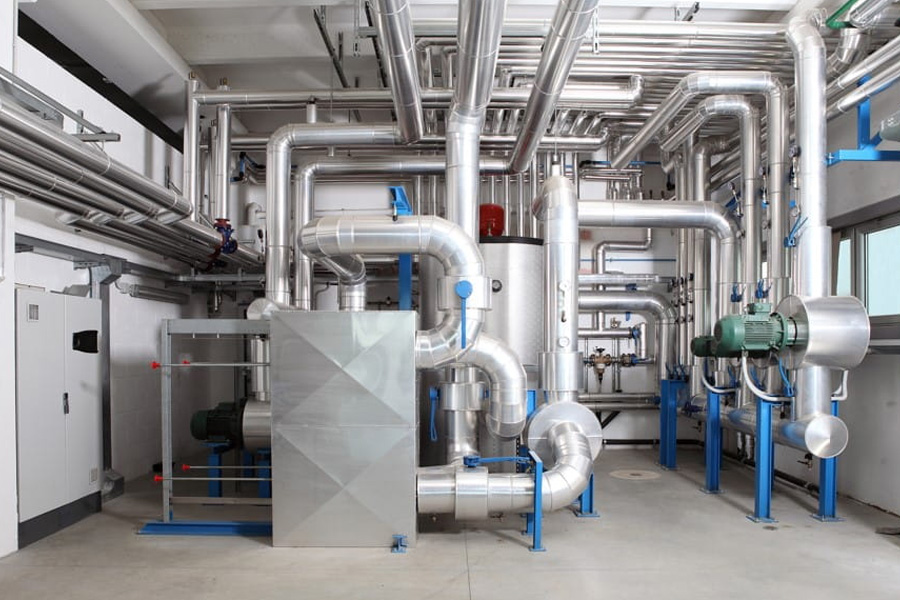
When it comes to home comfort, few systems are as essential as your HVAC. Heating, ventilation, and air conditioning keep your living space cozy in winter and cool in summer. Like any mechanical system, though, HVAC units require maintenance and occasional repairs to keep them operating efficiently. That’s where HVAC replacement parts come into play. Using the right components not only restores your system’s functionality but can also extend its lifespan and improve energy efficiency.
Understanding the Importance of Reliable HVAC Replacement Parts
Many homeowners underestimate how vital quality replacement parts are when fixing an HVAC system. Installing subpar or incompatible parts might seem like a quick fix but can cause bigger problems later on. An HVAC system is a complex arrangement of electrical, mechanical, and control components. Each part must work in harmony with others to maintain the right temperature, airflow, and safety standards.
Choosing the right replacement part ensures your system performs at its best, prevents unexpected breakdowns, and often keeps warranty coverage intact. For example, a critical component like a thermostat or control valve needs to match your system specifications exactly. Otherwise, it can cause inefficiencies or even damage other parts.
Spotlight on the Honeywell v8043f1036: A Key HVAC Component
One frequently sought-after replacement part is the Honeywell v8043f1036. This is a gas valve, an essential part of many heating systems that controls the flow of gas to the burners. Gas valves like the Honeywell v8043f1036 play a crucial role in ensuring safe, efficient heating by regulating fuel delivery precisely.
If your heating system is malfunctioning or not heating properly, a faulty gas valve might be the culprit. Replacing it with a high-quality valve like the Honeywell v8043f1036 restores proper gas flow control and helps maintain the safety features integrated into your HVAC system. Because gas valves handle flammable fuel, it’s important to use only approved, reliable parts designed for your model to avoid leaks or hazardous conditions.
Common HVAC Replacement Parts You Should Know About
Beyond gas valves, HVAC systems rely on numerous other replacement parts. Here are some key components that homeowners and technicians frequently need:
Thermostats:
These devices regulate the temperature by signaling the HVAC system to turn on or off. Modern digital thermostats can also improve energy savings through programmable settings.
Blower Motors:
Responsible for circulating air through the ducts, a failing blower motor can reduce airflow and system efficiency.
Capacitors:
These small electrical components help motors start and run smoothly. A bad capacitor can cause noisy operation or prevent your system from starting.
Filters:
Although technically consumables, air filters need regular replacement to keep indoor air clean and prevent dust buildup inside the system.
Igniters and Flame Sensors:
For gas furnaces, igniters light the burners and flame sensors verify the flame is present to maintain safety.
Expansion Valves and Refrigerant Components:
In air conditioners and heat pumps, these parts regulate refrigerant flow for proper cooling cycles.
Knowing which parts might wear out and when can save you from surprise breakdowns. Many of these components have typical lifespans, and some require seasonal checks to maintain optimal performance.
How to Source HVAC Replacement Parts
Finding the right HVAC replacement parts involves more than just matching model numbers. Reliable suppliers ensure parts are genuine, high quality, and compatible with your specific system. Buying directly from manufacturers like Honeywell or authorized distributors reduces the risk of counterfeit or substandard components.
Online stores and local HVAC service providers are common sources for parts. When ordering, provide your system’s model number, serial number, and specific part requirements to ensure accuracy. For example, requesting a Honeywell v8043f1036 without confirming compatibility could result in receiving a valve designed for a different model.
Some homeowners prefer to hire professional technicians who handle diagnostics and sourcing. This option adds a layer of expertise and often guarantees installation done correctly.
Tips for Maintaining Your HVAC System with Replacement Parts in Mind
While replacement parts are necessary when components fail, proactive maintenance can reduce the frequency of replacements and extend the life of your HVAC system. Simple steps include:
- Changing or cleaning air filters regularly to prevent strain on the system.
- Scheduling annual inspections and tune-ups with HVAC professionals to catch minor issues early.
- Keeping the outdoor unit free from debris and ensuring good airflow around it.
- Monitoring your system’s performance and addressing unusual noises, odors, or inefficiencies promptly.
If a part does fail, addressing it quickly can prevent damage to other components. For example, a failing blower motor can overheat and harm the control board, leading to more expensive repairs.
Why Investing in Quality Replacement Parts Pays Off
Cutting corners on HVAC replacement parts might save money upfront but often leads to bigger expenses down the road. Low-quality parts may wear out faster, cause inefficiencies, or compromise safety features. On the other hand, investing in parts like the Honeywell v8043f1036 and other trusted components helps your system operate efficiently, reduces energy bills, and maintains a comfortable home environment.
Furthermore, many HVAC warranties require that only approved parts be used during repairs. Using non-approved components can void your warranty, leaving you responsible for costly replacements.
Final Thoughts
Keeping your HVAC system running smoothly means being prepared to replace worn or faulty parts with high-quality, compatible components. Whether it’s a critical gas valve like the Honeywell v8043f1036 or other essential pieces, choosing reliable replacement parts is key to system efficiency, safety, and longevity.
By understanding your system’s needs, sourcing parts from reputable suppliers, and maintaining your equipment properly, you can avoid unexpected breakdowns and enjoy consistent comfort year-round. Taking care of your HVAC system with the right parts is not just smart—it’s an investment in your home’s comfort and your peace of mind.

